A good number of people believe that cancer of the breast starts strictly from the breast tissues. But today, there are new findings that breast cancers are far from this believe.
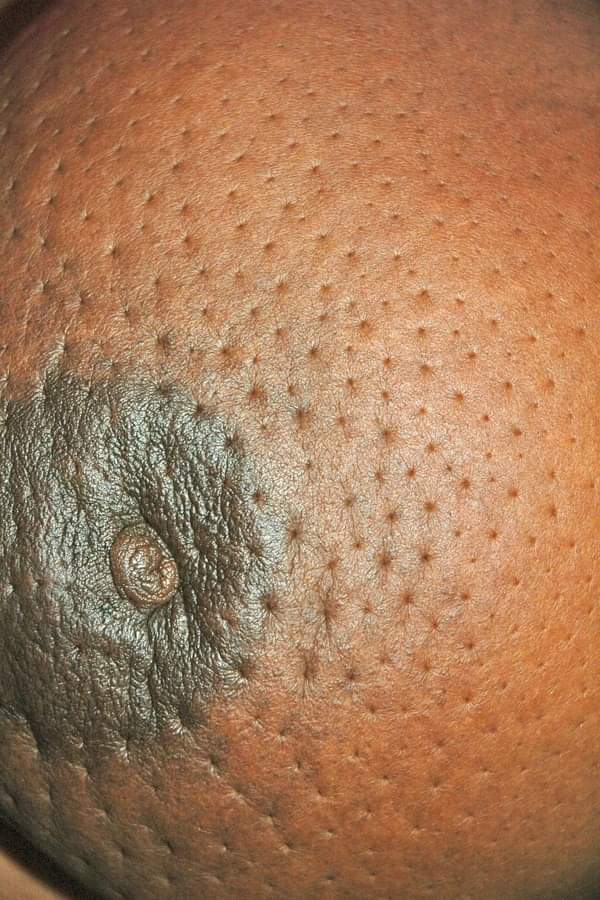
It is a known fact that the most common area for breast cancers is the upper outer portion of the breast. The upper outer part of the breast is where there are more breast lobules and ducts. This also includes the area of the breast going into the armpit, the axillary tail. So these are considered breast cancers starting in the armpit (the axilla).
It has been known that some patients are diagnosed because they feel a lump in the armpit as the breast cancers had spread to the draining lymph nodes located there.
While doing self examination we also include the armpit as part of the exam.
According to findings, cancer develops as a result of mutations or abnormal changes, in the genes which are the growth regulators of cells.
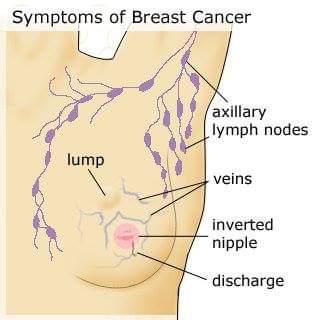
Originating Sites Of Cancer
Breast cancer is a type of cancer that develops due to uncontrolled growth of breast cells. Breast cancer either begins in the lobules, which are the milk-producing glands. This is known as lobular carcinoma. It can also begin in the ducts, the pathways that carry milk from the lobules to the nipple. And this is known as ductal carcinoma. Breast cancer can also occur in the stromal tissues, which include the fatty and fibrous connective tissues of the breast. However, this is less common. Most breast cancers begin in the ducts or lobules.
How Cancer Gets To Other Sites:
Cancer may grow and invade tissue around the breast, such as skin or chest wall. It can spread to nearby lymph nodes which can form a pathway for the cancer cells to spread to other parts of the body.
Most of the lymph vessels of the breast drain into following lymph nodes:
-Lymph nodes under the arm (axillary nodes)
-Lymph nodes around the collar bone (supraclavicular i.e.above the collar bone and infraclavicular i.e. below the collar bone).
-Lymph nodes inside the chest near the breast bone (internal mammary lymph nodes).
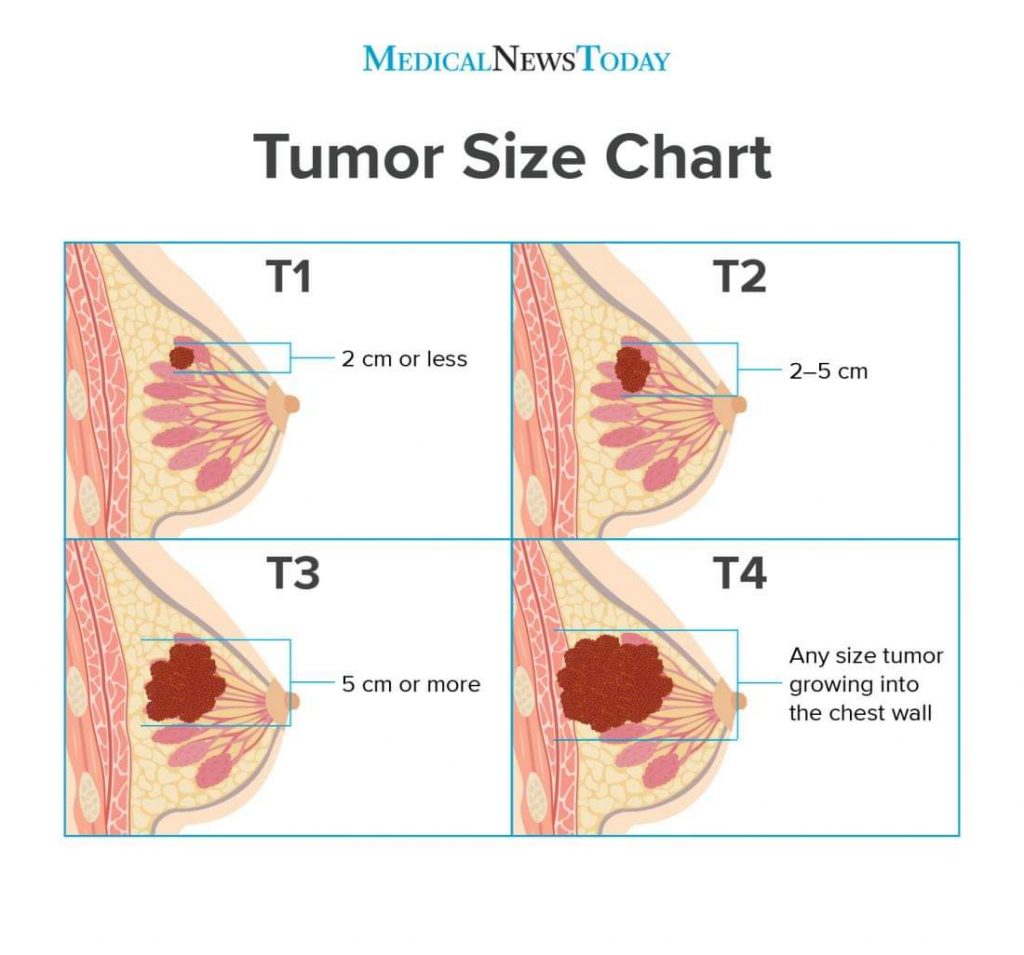
Early Cancer Detection:
Breast cancer cells usually form a tumour which can often be seen on an x-ray (mammogram) or felt as a lump. Breast cancer can occur in both men and women, but it is more common in women. It is the most common cancer in women worldwide and the second leading cause of cancer deaths, after lung cancer.
Types Of Breast Cancers
IN SITU CANCERS: The two types of In situ cancers are: Ductal carcinoma in situ (DCIS) and Lobular carcinoma in situ (LCIS)
INVASIVE CANCERS: This has two types with sub types. They are: Invasive ductal carcinoma and Invasive lobular carcinoma. The subtypes include:
1.Adenoid cystic (or adenocystic) carcinoma
2. Low-grade adenosquamous carcinoma
3. Medullary carcinoma
4. Mucinous carcinoma
5.Papillary carcinoma
6.Tubular carcinoma
However, the less common ones types are:
1.Inflammatory breast cancer
2.Paget’s disease of the breast
3.Phyllodes tumours of the breast
4.Angiosarcoma
5.Male breast cancer
6.Metastatic breast cancer
7.Recurrent breast cancer
Symptoms Of Breast Cancer
This varies from person to person. Different people have different symptoms of breast cancer. Some people may not have any signs or symptoms at all. However, Some alarming signs of breast cancer are as follows:
■A New lump or mass in the breast is the first sign of breast cancer. Any lump or thickened area in or near the breast or underarm (armpit) that feels different than surrounding tissue and has developed recently.
■Thickening or swelling of part of the breast.
■Swelling of lymph nodes (Sometimes breast cancer can spread to lymph nodes under the arm or around the collar bone causing a lump or swelling there, even before the original tumour in the breast can be felt.)
■Changes in the nipple area, areola or the skin of the breast like redness, dimpling, puckering, peeling, scaling, flaking or inflammation.
■Changes in the shape or position of the nipple (sunken or inverted nipple, nipple retraction) or pain in the nipple area.
■Nipple discharge other than breast milk may be bloody or clear.
■Any sudden, unexplained change in the size or the shape of the breast.
■Pain in any area of the breast.
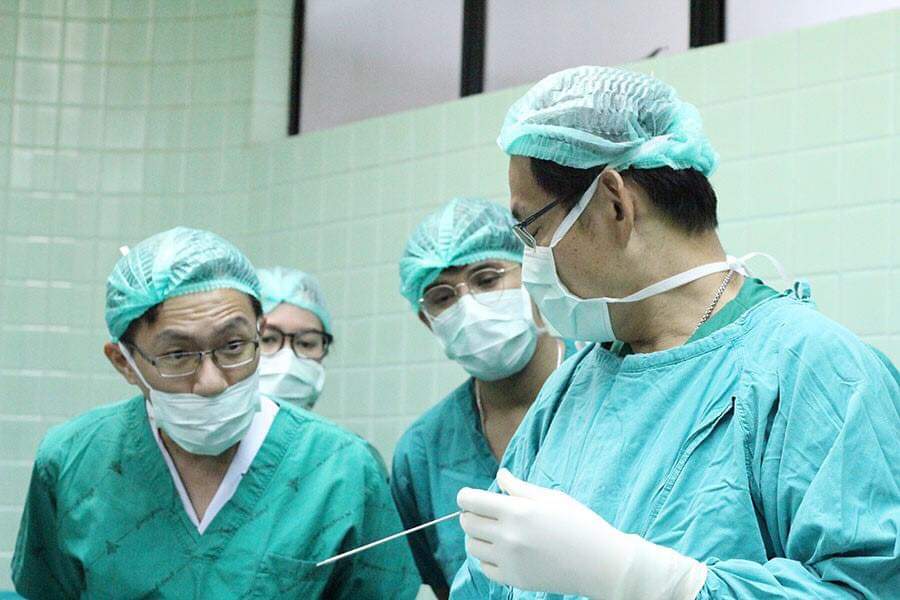
Nevertheless, if any of the above symptoms are present, it does not always mean that one has breast cancer. Those changes can also be due to some serious, non-cancerous conditions, such as an infection or a benign cyst.
Cancer can usually appear as a painless, hard mass with irregular edges; however, breast cancers can be tender, soft, or round and can even be painful. Therefore, it is important to report any unusual change in the breast area such as a lump or a mass to an experienced doctor and get examined to find out the cause.
Causes Of Breast Cancer
Breast cancer is cancer that develops due to uncontrolled growth of breast cells. They divide more rapidly than the normal healthy cells and accumulate, forming a lump or mass.
However, 85-90% of breast cancers are caused by a complex interaction of the genetic makeup of an individual and the environment as a result of the ageing process.
Only 5-10% of breast cancers are linked to gene mutations passed through generations of a family. Some of the inherited mutated genes which can increase the chances of breast cancer have been identified. Two well-known genes are breast cancer gene 1 (BRCA1) and breast cancer gene 2 (BRCA2). Both of them significantly increase the risk of both breast and ovarian cancer.
Risk Factors Of Breast Cancer
The risk factors of breast cancer include:
■ Age: Risk for developing breast cancer increases with age. Most invasive breast cancers are found in women over age 55.
■Drinking alcohol: Consuming excessive amounts of alcohol raises the risk of breast cancer.
■Having dense breast tissue: Dense breast tissue increases the risk of breast cancer and also makes mammograms hard to read.
■ Gender: Women are much more likely than men to develop breast cancer.
■ Genes: Women having the BRCA1 and BRCA2 gene mutations are more likely to develop breast cancer than women who don’t have. Other gene mutations may also affect risk. Mutations in the TP53 gene have also been linked to increased breast cancer risk.
■ Bodyweight/ Obesity: Women who become overweight or develop obesity after menopause may have a higher chance of developing breast cancer, which is possibly due to increased estrogen levels. High sugar intake can also be a factor.
■Menstrual history:
Early menstruation: Having menarch (beginning of period) before age 12 increases the risk of breast cancer.
Late menopause start: Women who do not get menopause (natural stopping of the menstrual cycle) until after age 55 are more likely to develop breast cancer.
■ Hormone therapy: Women who take postmenopausal estrogen and progesterone medications to reduce their signs and symptoms of menopause have a higher risk of breast cancer. This risk decreases when women stop taking these medications.
■Family history of breast cancers: If a close female relative has had breast cancer, it increases the risk of developing it. This includes the patient’s mother, grandmother, sister, or daughter. If a person doesn’t have a family history of breast cancer, they can still develop breast cancer. In fact, the majority of people diagnosed with breast cancers have no family history of the disease.
■ Reproductive history:
■Giving birth at an older age: Women who give birth to their first child after age 35 may have an increased risk of breast cancers.
■Never being pregnant: Women who have never been pregnant or never carried a pregnancy to full term are more likely to develop breast cancer than the women who have had one or more pregnancies.
■ Previous history of breast cancer or breast lumps: If one has had breast cancer in one breast, they have an increased risk of developing breast cancer in the other breast or in a different area of the previously affected breast. Also, having some type of noncancerous breast lump increases the chance of developing cancer later on.
■ Estrogen exposure and breastfeeding: Extended exposure to estrogen increases the risk of breast cancer which could be due to a person having an early menarch or entering menopause at a later than average age. Between these times, estrogen levels are higher. Breastfeeding, especially for more than 1 year, appears to reduce the chance of developing breast cancer which is mostly due to the drop in estrogen exposure that follows pregnancy and breastfeeding.
■Radiation exposure: If a person has undergone radiation treatment for a different cancer, it may increase the risk of developing breast cancer later in life.
■ Physical activity: Women who are not physically active have a higher risk of getting breast cancers.
■ Smoking: Smoking is associated with a small increase in the risk of breast cancer.
BREAST CANCER PREVENTION:
Risk of breast cancers can be reduced by making changes in daily life:
●Lifestyle factors:
Lifestyle factors can affect your risk of breast cancer. Maintaining a healthy diet and getting more exercise could help you lose weight and lower your risk.
● Alcohol consumption:
Limit the amount of alcohol you drink and talk to your doctor about what amount they recommend for you.
●Maintain a healthy weight:
If you need to lose weight, consult your doctor about healthy strategies to accomplish this. And if you are at a healthy weight, then try to maintain the same. Keep exercising.
●Choose a healthy diet:
Women who eat a Mediterranean diet supplemented with extra-virgin olive oil and mixed nuts may have a reduced risk of breast cancer. The Mediterranean diet focuses mainly on plant-based foods, such as fruits and vegetables, whole grains, legumes, and nuts.
●Breast cancer screening:
Discuss with your doctor when to start breast cancer screening examinations and tests, such as clinical breast exams and mammograms (X-ray of the breast). Also, talk about the benefits and risks of screening.
According to the American Cancer Society, women should have the option of receiving annual screenings at age of 40 years, begin annual screening at age of 45 years, and move to biennial screening at age of 55 years.
●Breast examination:
■ Self-examination.
Women should become familiar with their breasts through breast self-exam for breast awareness. It should be part of the monthly health care routine. Breast awareness can’t prevent breast cancers, but it may help to better understand the normal changes that the breasts undergo and identify any unusual signs and symptoms which may help to consult the doctor.
■Breast exam by the doctor:
If you have noticed some unusual symptoms, it’s good to have the doctor do a breast exam. During the examination, your doctor will check both of your breasts for abnormal spots or signs of breast cancer. The doctor may also check other parts of your body to check if the symptoms you’re having could be related to some another condition.
■ Limit postmenopausal hormone therapy:
To reduce the risk of breast cancer, use the lowest dose of hormone therapy possible for the shortest amount of time.
■ Breastfeed your children, if possible.
■Genetic counselling and testing:
If there is a family history of breast cancer or a family member with a known gene mutation, there can be a chance that you might have inherited a gene which increases your risk of breast cancer, you should talk to your doctor about genetic counselling to see if you should be tested.
BREAST CANCER AWARENESS:
Nowadays, people today are increasingly aware of the issues associated with breast cancer. Breast cancer awareness efforts have helped people learn what the risk factors are, how they can reduce the level of risk, what symptoms they should look for, and what kinds of screening they should undergo.
October is held as the Breast Cancer Awareness Month every year worldwide.
■DIAGNOSIS:
Several imaging tests and procedures used to diagnose breast cancer include:
●Breast exam: Doctor will check both of your breasts and lymph nodes in your armpit, for any lumps or other abnormalities.
■Mammogram: A mammogram is an X-ray of the breast. Mammograms are commonly used for screening for breast cancers. If an abnormality is detected on a screening mammogram, the doctor may recommend a diagnostic mammogram for further evaluation of that abnormality. Many women aged 40 and above get annual mammograms done to check for breast cancer.
■ Breast ultrasound: Ultrasound uses sound waves to produce images called sonograms of structures deep within the body. It can help to determine whether a new breast lump is a solid mass or a fluid-filled cyst.
■ Breast magnetic resonance imaging (MRI): An MRI machine uses a magnet and radio waves to create pictures of the interior of your breast. Before a breast MRI, injection of dye is given.
■ Removing a sample of breast cells for testing (biopsy): A biopsy is the only definitive way to make a diagnosis of breast cancer. In this test, tissue or fluid is removed from the breast to be examined under a microscope and do more tests.
Common procedures include:
i) Fine-needle aspiration: This is for easy-to-reach lumps or those that might be filled with fluid.
ii) Core-needle biopsy: This type uses a bigger needle to remove a piece of tissue.
iii) Surgical (open) biopsy: A surgeon removes the entire lump along with nearby breast tissue.
iv) Lymph node biopsy: The doctor removes a part of the lymph nodes under your arm to see if cancer has spread.
v) Image-guided biopsy: The doctor uses imaging to guide the needle.
Biopsy samples are sent to a laboratory for analysis whether the cells are cancerous or not and also to determine the type of cells involved in the breast cancer, the aggressiveness (grade) of cancer, and whether the cancer cells have hormone receptors or other receptors which can influence the treatment options.
Diagnosis also involves staging cancer.
STAGING THE BREAST CANCER:
Staging provides a picture of a person’s chances of recovery and their ideal course of treatment.Tests and procedures used to stage breast cancer may include:
· Blood tests, such as a complete blood count
· Mammogram of the other breast to look for signs of cancer
· Breast MRI
· Bone scan
· Computerized tomography (CT) scan
· Positron emission tomography (PET) scan
Breast cancer staging also takes into account the following things: cancer’s grade; the presence of tumour markers, such as receptors for estrogen, progesterone and HER2; and proliferation factors.
BREAST CANCER STAGES:
In order to determine a stage of breast cancer, the doctor needs to know:
-if the cancer is invasive or noninvasive,
-how large the tumour is,
-whether the lymph nodes are involved or not, and
-if cancer has spread to nearby tissue or organs.
Breast cancer has five main stages: stages 0 to 4.
i) Early-stage, Stage 0 or noninvasive breast cancer.:
Stage 0 is Ductal Carcinoma In Situ (DCIS). Cancer cells in DCIS remain confined to the ducts in the breast and have not invaded nearby tissues.
ii) Stage 1 breast cancer:
Stage 1A: The primary tumour is 2 centimetres wide or less and the lymph nodes are not affected.
Stage 1B: Cancer is found in nearby lymph nodes, and either there is no tumour in the breast, or the tumour is less than 2 cm.
iii) Stage 2 breast cancer:
Stage 2A: The tumour is less than 2 cm with nearby lymph node involvement, or it’s between 2 to 5 cm without any lymph node involvement.
Stage 2B: The tumour is between 2 to 5 cm with axillary (armpit) lymph node involvement, or it’s more than 5 cm without any lymph node involvement.
iv) Stage 3 breast cancer:
Stage 3A: Tumors more than 5 cm and cancer has spread to 1–3 axillary lymph nodes or any breastbone nodes.
Or, cancer has spread to 4–9 axillary lymph nodes or has enlarged the internal mammary lymph nodes, and the primary tumour can be any size.
Stage 3B: A tumour of any size with the invasion of the chest wall or skin.
Stage 3C: A tumour of any size which is found in 10 or more axillary lymph nodes, lymph nodes near the collarbone, or internal mammary nodes.
v) Stage 4 breast cancer:
Stage 4: Tumor of any size and its cancer cells have spread to nearby and distant lymph nodes as well as distant organs such as bones, lungs, liver, brain.
BREAST CANCER TREATMENT:
Treatment depends on several factors, including:
-the type and stage of the cancer
-the person’s sensitivity to hormones
-the age, overall health, and preferences of the individual.
Treatment options include:
1) Surgery:
i) Breast-conserving surgery: Only the cancerous part of the breast along with some nearby tissue is removed by the surgeon. Types include:
· Lumpectomy
· Quadrantectomy
· Partial mastectomy
· Segmental mastectomy
ii) Surgery to remove lymph nodes: Lymph nodes from under the arm can be taken out to find out whether cancers has spread to them. There are two kinds of these surgeries in this section:
· Sentinel lymph node biopsy- one or a few lymph nodes where cancer is most likely to spread are removed.
· Axillary lymph node dissection- this involves more nodes, though usually fewer than 20.
iii) Mastectomy: A surgeon removes the entire breast, along with all of the breast tissue and sometimes nearby tissues. There are several types of mastectomies:
· Simple or total mastectomy- The surgeon removes the entire breast, but not the lymph nodes under the arm unless they’re within the breast tissue.
· Modified radical mastectomy- entire breast along with lymph nodes under the arm are removed by the surgeon.
· Radical mastectomy- entire breast and lymph nodes under the arm and up to the collarbone, as well as the chest wall muscles under the breast are removed by the surgeon.
· Partial mastectomy- The surgeon removes the cancerous breast tissue and some tissue nearby, usually more than in a lumpectomy.
· Nipple-sparing mastectomy- The surgeon removes all the breast tissue except the nipple.
· Contralateral prophylactic mastectomy- If you have cancer in one breast and a very high risk of getting it in the other breast, you might choose to have both breasts removed.
2) Radiation therapy:
A patient may undergo radiation therapy around a month after surgical therapy. Radiation therapy involves targeting the tumour with controlled doses of radiation that kill any remaining cancer cells.
The amount and type of radiation therapy depend on the type of surgery you had, whether your cancers has spread to the lymph nodes or somewhere else in your body, the size of your tumour, and sometimes, your age. One might have a single type or a combination:
i. External beam radiation: Radiation comes from a machine outside your body. It can generally be given 5 days a week for 5 to 6 weeks. Some types of external beam radiation include:
· Hypofractionated radiation therapy- Larger doses using fewer treatments, typically only 3 weeks are given.
· Intraoperative radiation therapy (IORT)- Single large dose of radiation in the operating room right after breast conservation surgery (before the wound is closed) is given.
· 3D-conformal radiotherapy- Radiation from special machines which better aim it at the area where the tumour was being given. Treatments are given twice a day for 5 days.
ii) Internal radiation (brachytherapy): Something radioactive is put
inside your body by the doctor for a short time.
· Interstitial brachytherapy- Several small, hollow tubes called catheters are inserted into the breast around the area where the cancer was. They stay in place for several days. Doctors put radioactive pellets into them for short periods every day.
· Intracavitary brachytherapy- This is the most common type of brachytherapy for women with breast cancers. The doctor uses a small catheter to put a device inside your breast. The device is widened and stays in place during the treatment. The other end sticks out of the breast. The doctor uses a tube to put radiation sources (often pellets) into the device. You usually get this twice a day for 5 days as an outpatient. After the last treatment, the doctor collapses and removes the device.
Breast cancer radiation can last from three days to six weeks, depending on the treatment. Radiation oncologist determines which treatment is best for you based on your situation, your cancer type and the location of your tumour.
Side effects of radiation therapy include fatigue and a red, sunburn-like rash where the radiation is aimed. Breast tissue may also appear swollen or more firm. More-serious problems such as damage to the heart or lungs are rare and very rarely, second cancers in the treated area occur.
3) CHEMOTHERAPY:
Chemotherapy uses drugs to destroy fast-growing cancer cells. If cancer has a high risk of returning or spreading to another part of the body, the doctor may recommend chemotherapy after the surgery to decrease the chance of recurrence of cancers, it is called adjuvant chemotherapy.
Chemotherapy is sometimes given before surgery in women with larger breast tumours to shrink the tumour to a size which makes it easier to remove with surgery, it is called neoadjuvant chemotherapy.
Chemotherapy drugs can be in the form of pills you take or medicines are given in your veins, or sometimes both.
Chemotherapy side effects depend on the drugs you receive. Common side effects include hair loss, nausea, vomiting, fatigue and an increased risk of developing an infection. Rare side effects can include premature menopause, infertility (if premenopausal), damage to the heart and kidneys, nerve damage, and, very rarely, blood cell cancer.
4) HORMONE THERAPY:
Hormone blocking therapy is used to prevent hormone-sensitive breast cancers from recurrence after treatment. Hormone therapy may be used to treat estrogen receptor (ER)-positive and progesterone receptor (PR)-positive cancers.
Hormone blocking therapy is usually administered after surgery but can be sometimes used beforehand to shrink the tumour. This therapy may be the only option for people who are not suitable candidates for surgery, chemotherapy, or radiotherapy. A person may be recommended hormone therapy for 5–10 years after surgery.
Examples of hormone-blocking therapy medications include:
· Tamoxifen
· Fulvestrant
· Aromatase inhibitors
-Anastrozole
-Exemestane
-Letrozole
· Ovarian ablation or suppression
-Goserelin, which is a luteinizing hormone-releasing agonist drug that suppresses the ovaries.
Hormonal treatment may have an effect on fertility.
5) TARGETED THERAPY DRUGS:
Targeted drug treatments attack specific abnormalities within cancer cells. For example, Herceptin (trastuzumab) can block body’s production of the HER2 protein which helps breast cancer cells grow, so taking a medication to slow the production of this protein may help slow cancer growth. Examples include:
· Lapatinib (Tykerb)
· Bevacizumab (Avastin)
· Pertuzumab (Perjeta)
· Trastuzumab (Herceptin)
6) IMMUNOTHERAPY:
Immunotherapy uses your immune system to fight cancer. Medications such as atezolizumab (Tecentriq) help the immune system fight cancer.
7) SUPPORTIVE (PALLIATIVE) CARE:
Palliative care is specialized medical care which focuses on providing relief from pain and other symptoms of a serious illness. Palliative care specialists work with you, your family and your other doctors to provide an extra layer of support that complements your ongoing care. Palliative care can be used while undergoing other aggressive treatments, such as surgery, chemotherapy or radiation therapy.
Palliative care is provided by a team of doctors, nurses and other specially trained professionals and it aims at improving the quality of life for people with cancers and their families.
Different specialists often work together to treat breast cancer. Surgeons perform operations. Medical oncologists treat cancer with medicine. Radiation oncologists treat cancer with radiation.
Top 5 myths about breast cancers:
— There’s no history of breast cancer in my family so I won’t get it.
“That’s not true,” said Dr. Marisa Weiss, an oncologist and the president of Breastcancer.org – Breast Cancer Information and Awareness. Although women with a family history are at a higher risk for the disease, environmental factors, drinking, smoking, medication and diet can all influence a woman’s chances of getting breast cancer.
Knowing the history of breast cancers on both sides of your family is also important. Just because a woman doesn’t have a history of breast cancer on her mother’s side, doesn’t mean she cannot have cancer.
A doctor telling you that your previous lump will not become cancer bothers me, unless the doctor could identify it as a fluid-filled lymphatic cyst. I would ask what test was used to know more about that one. The question I would have is whether that original lump is still present, and if so is it smaller, larger, or the same size.
The fact that you have a swelling under the arm suggests more like it might be a lymph node that is reacting to something. That could be normal activity doing what is supposed to happen, or it could be something that needs attention.
Your body has white blood cells that fight infections and cancer. They travel in arteries and veins and in their own special tubes called lymphatic. They have centers where they grow and develop their immune powers. Those centers are called lymph nodes, and there are a lot of them in your arm pits, your neck, your groin, and along the back side of your abdomen and chest. Breast tissue has lymphatics that carry white blood cells to the lymph nodes in your armpits. Some kinds of cancers cells can get loose from the body parts where they start and travel along the lymphatics to grow in other parts.
Another possibility is hidradenitis suppurativa, a common skin condition resulting in lesions similar to boils in the armpit and groin region.
Infections of the breast will also result in swollen lymph nodes of the armpit. Occasionally extra breast tissue is also located there, and can swell with the same conditions that cause regular breast tissue to swell (such as pregnancy or medications)
However, there is evidence showing wearing bras could be a factor in breast cancer. In his book, Dressed to Kill, Sydney Ross Singer suggests that bras can constrict the flow of lymph, which is importing to remove toxins. If lymph cannot flow and becomes congested (there are several lymph nodes in the axilla, or armpit), then inflammation occurs from lingering toxins, which then contributes to cancers. His theory makes sense, given the rapid rise in breast cancers over the last 100 years. He suggests, if wearing a bra, to wear a sports bra.
Not necessarily specially at a young age. There are lots of different kinds of benign breast tumors like fibroadenoma, phyllodus tumor. But it is always better to do a FNAC test to check if the nature of the lump.
Sometimes doctors refuse as they feel you cannot get breast cancer at a young age. Yes, it could very easily be an enlarged lymph node which could be cancer. But if it has been there for many months you have see a doctor about it.
The faster you seek serious answers – from medical professionals the better.
1 in 9 women get breast cancers and a lump in a lymph node could be a metastatis. Men can also get breast cancers though it is less common.
See a doctor today.
Read Also: Easy And Simple Tips To Prevent And Cure Cataract (video)
Sources:
Mayo clinic, Metastatic Breast Cancer Alliance, Macmillan In The South West, Cancer Treatment Centres Of America,
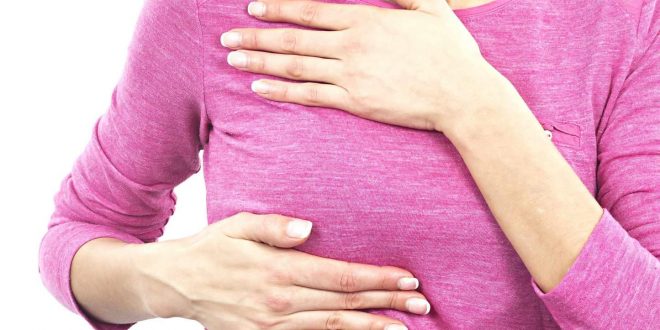



![The food poisoning deaths occurred less than 24 hours after consuming oil bean flakes [a popular food synonymous to Imo citizens].](https://www.reportngr.com/wp-content/uploads/2025/01/FB_IMG_1736345280752-310x165.jpg)




